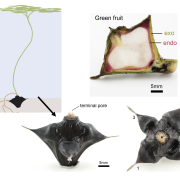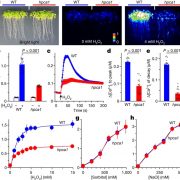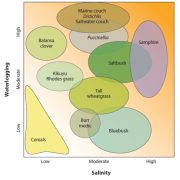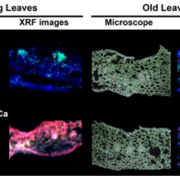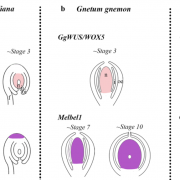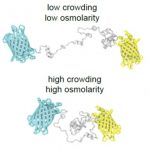Evolution and ecology of seed internal morphology in relation to germination characteristics in Amaranthaceae ($) (Ann. Bot.)
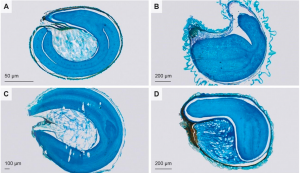 Seed germination, a critical life stage in a plant’s life cycle, can be affected by internal seed morphology. In this exciting research, Vandelook and colleagues investigated the evolution of embryo and nutritive tissue characteristics and their relationship with the germination traits of 84 species of Amaranthaceae, a large and diverse family that includes many plants adapted to harsh environments. Four embryo types were found, with the annular (ring-shaped) one the most common, probably representing the family’s ancestral character state. Embryo type and embryo- to-seed size ratio showed a significant phylogenetic signal, meaning related species tend to be similar in these traits. Interestingly, embryo-to-seed size ratio was associated with species habitats and physiology, with higher proportions found in species from saline environments and with C4 photosynthesis. Moreover, in these species, seeds with relatively larger embryos and reduced nutritive tissue germinated faster, suggesting the importance of embryo size for germination under stressful conditions. This study highlights the relevance of internal seed morphological traits for the evolution of seed germination strategies. (Summary by Carlos A. Ordóñez-Parra @caordonezparra) Ann Bot. 10.1093/aob/mcab012
Seed germination, a critical life stage in a plant’s life cycle, can be affected by internal seed morphology. In this exciting research, Vandelook and colleagues investigated the evolution of embryo and nutritive tissue characteristics and their relationship with the germination traits of 84 species of Amaranthaceae, a large and diverse family that includes many plants adapted to harsh environments. Four embryo types were found, with the annular (ring-shaped) one the most common, probably representing the family’s ancestral character state. Embryo type and embryo- to-seed size ratio showed a significant phylogenetic signal, meaning related species tend to be similar in these traits. Interestingly, embryo-to-seed size ratio was associated with species habitats and physiology, with higher proportions found in species from saline environments and with C4 photosynthesis. Moreover, in these species, seeds with relatively larger embryos and reduced nutritive tissue germinated faster, suggesting the importance of embryo size for germination under stressful conditions. This study highlights the relevance of internal seed morphological traits for the evolution of seed germination strategies. (Summary by Carlos A. Ordóñez-Parra @caordonezparra) Ann Bot. 10.1093/aob/mcab012


